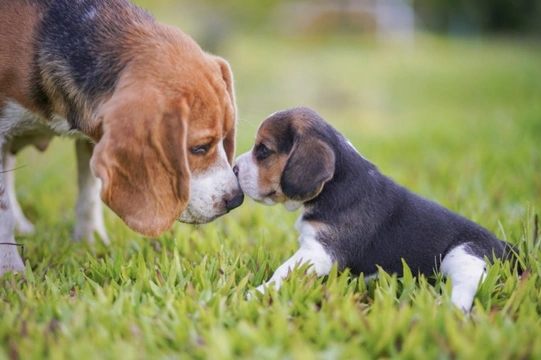
Are Beagles hard to train?
The Beagle is the 21st most popular dog breed in the UK, which is quite a surprise given that up until very recently in their history, this was a breed that was kept more or less exclusively as a working dog rather than a pet.
Beagles are small hounds that were originally used to hunt hare, and they’re more specifically scent hounds, with a superior sense of smell even when compared to most other dogs. They have a very tenacious approach to pursuing things of interest, and this makes them great trackers. They’re also highly social and used to being part of a pack.
However, while beagles are loving, outgoing, very lively and friendly and have a lot to recommend them in many respects, they are one of the more challenging dog breeds to keep as a pet, and they can be rather a handful.
Beagles also have a reputation for being hard to train, and some first-time beagle owners, even those who have trained other dogs before, have found themselves defeated in this respect; so, are Beagles hard to train? Can beagles be trained at all?
A fair answer to both of these questions is yes. Beagles are harder to train than most dog breeds, and what might be an effective approach to train another dog might not work with a beagle at all.
However, it is entirely possible to train a beagle, with the right approach and a good understanding of the breed and how they think; even if you haven’t succeeded so far.
This article will answer in full the question “are beagles hard to train?” And share some tips and pointers on training a beagle. Read on to learn more.
Are Beagles hard to train?
Yes, it is fair to say that by most objective assessments, beagles are hard to train, or rather, harder than most other dog breeds.
This is something most beagle owners and those that have worked with the breed will tell you, and tends to manifest as beagles taking longer to learn a command than other breeds, being less reliable about executing the commands that they do know in theory, and being able to learn and retain fewer commands than most other dogs too.
They are also harder for first-time dog owners who have never sussed out an approach to dog training before, and challenging to house train in many cases too.
That said, every dog is an individual and some beagles will take to training – or find that their learning style and their trainer’s teaching style match more closely and so, that they get on better – more reliably than others.
Why are Beagles hard to train?
There are a combination of beagle traits that all combine to make them rather harder to train than the average dog, and how strongly each dog possesses each trait can mean that how long it takes to train any one beagle can be quite variable.
First of all, they’re very excitable little dogs, which means it can be hard to catch and particularly, keep their attention. If a thing bores them or if something else is more interesting, they will concentrate on that instead.
However, this isn’t always obvious to their handlers, because one of the most common things that distracts beagles is scents, given that they’re excellent scent hounds; and we humans cannot detect the vast majority of scents that beagles can. This means that we don’t always recognise what is distracting the dog or even that the dog is distracted at all, making it hard to find a way to get their attention back.
The breed is also renowned for having a short attention span, again much of which might be driven by scent stimulus, and they can also be incredibly stubborn too.
Additionally, while they can fairly be said to have a short attention span for anything that doesn’t interest them, they’re obsessive when something (like an interesting smell) does, and can be very stubborn too.
Finally, in terms of canine working intelligence the beagle falls very low on the list – in the Coren ranking of canine intelligence by breed, the beagle is 131st out of 138 dog breeds, and so their capacity to learn and retain information is limited too.
Can you train a Beagle?
Despite all of these factors that can make things harder, it is still possible to train a beagle. However, you need to have a plan for doing so, understand that it will take time and patience, and be very consistent in your approach.
You also need to manage your expectations in terms of how much beagles can learn, choosing the commands you teach them carefully as they might not be able to retain a large number of them. Finally, you need to commit to refreshing your beagle’s training regularly to keep them obedient.
How do you train a beagle?
The key to successfully training a beagle is to work with, not against, their core traits, and this means first recognising what these are. Beagles are scent hounds that were developed to hunt hares, and their key character traits are an independent streak, high energy levels, high levels of endurance, a fantastic scenting ability, and a high motivation to follow scents.
They are also, like most dogs, very driven by food rewards; and putting all of this information together can help you to develop an effective beagle training plan.
This should be based on short, frequent training sessions, lots of praise and rewards, and finding ways to channel their energy into things they enjoy, like scenting-based games.



